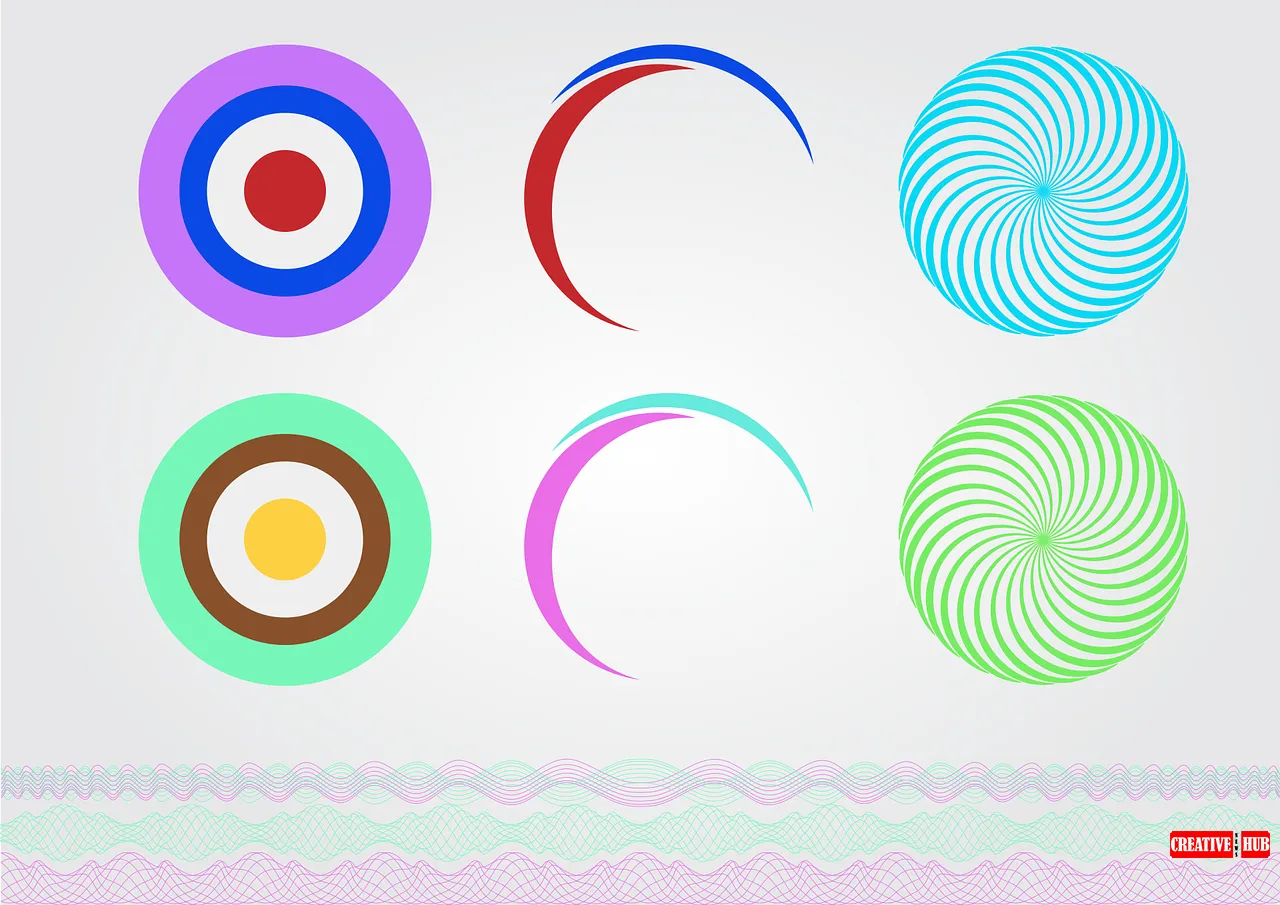The quest to create logos that resonate deeply with audiences is paramount. This endeavor is about aesthetics and embedding meaning and symbolism that communicate a brand’s core values and identity. As brands strive to stand out in a crowded market, the role of meaningful symbolism in logo design becomes increasingly significant. Symbols that connect with audiences on an emotional level are not only visually appealing but also timeless and impactful.
The importance of meaningful symbolism in logo design cannot be overstated. As discussed in the recent episode of the LogoTalk Podcast, symbolism is one of the key principles contributing to logo longevity and effectiveness. Alongside simplicity, versatility, and color psychology, symbolism forms the foundation of a successful logo design strategy.
The Historical Context of Symbolism in Logos
Logo symbolism is not a new concept. Since ancient times, symbols have been a powerful communication tool. From the heraldic crests of medieval Europe to the intricate motifs of ancient Egypt, symbols have conveyed complex messages and represented identities. In the modern era, this tradition continues, with logos serving as the visual embodiment of a brand’s essence.
Using symbolism in logos is deeply rooted in history, drawing from cultural, religious, and social motifs. Brands leverage these symbols to create a narrative that resonates with their audience. For example, the Nike swoosh, inspired by the wing of the Greek goddess Nike, symbolizes victory and movement. Such historical references enrich logos with layers of meaning, providing depth and context that transcend time.
The Role of Color and Shape in Symbolism
Color and shape are integral to the symbolism in logo design. Each color carries specific connotations and can evoke particular emotions. Red, for instance, often symbolizes passion and energy, while blue conveys trust and calmness. The choice of color can significantly impact how a logo is perceived and what it communicates about a brand.
Shapes, too, play a crucial role in logo symbolism. Circles often represent unity and infinity, while squares convey stability and reliability. A logo’s combination of colors and shapes can create a powerful symbolic language that speaks volumes about a brand’s identity. Designers must carefully consider these elements to ensure that the symbolism aligns with the brand’s message and values.
Crafting a Narrative Through Symbolism
Symbolism in logos is not just about visual appeal but also about storytelling. A well-designed logo can tell a brand’s story at a glance, and this narrative aspect of logo design is crucial for connecting with the audience.
Embedding symbols that reflect a brand’s mission, vision, and values allows designers to craft a compelling story that resonates with consumers, which is the holy grail of logo design.
For instance, the World Wildlife Fund’s panda logo is more than just an image of an animal. It symbolizes the organization’s commitment to conservation and the protection of endangered species. This powerful narrative, embedded in a simple yet meaningful symbol, has helped the brand establish a strong emotional connection with its audience.
The Psychological Impact of Symbolism
Symbolism in logos also taps into the psychological aspect of branding. Humans are naturally drawn to symbols, which can profoundly impact our perceptions and emotions. A well-chosen symbol can evoke nostalgia, trust, excitement, or aspiration. Understanding the psychological impact of symbols allows designers to create logos that capture attention and influence consumer behavior.
The psychological power of symbolism is evident in logos like Apple’s bitten apple, which symbolizes knowledge and innovation, drawing a connection to the biblical story of Adam and Eve. Such symbols create an aspirational image that resonates with consumers, making them more likely to engage with the brand.
The Future of Symbolism in Logo Design

As we look to the future, the role of symbolism in logo design will continue to evolve. With technological advancements and a growing emphasis on sustainability and ethics, designers are exploring new ways to incorporate symbolism into logos. Trends such as minimalism, bold typography, and motion graphics offer fresh opportunities for creative expression and symbolic representation.
Incorporating meaningful symbolism in logo design is about following trends and creating logos that stand the test of time. Understanding symbols’ historical, cultural, and psychological aspects helps designers craft innovative and enduring logos.
In conclusion, meaningful symbolism in logo design is a powerful tool that can elevate a brand’s identity and create lasting connections with audiences. As brands continue to navigate an increasingly competitive landscape, the ability to communicate through symbols will be a key differentiator. By embracing the art of symbolism, designers can unlock new possibilities and create logos that captivate and inspire.
Integrating Symbolism with Modern Design Techniques
Designers must balance tradition with innovation by integrating symbolism into modern logo design. This involves leveraging contemporary design techniques and tools to enhance the symbolic elements of a logo.
For instance, 3D design allows for more dynamic and engaging interpretations of symbols, offering a fresh perspective that can captivate audiences. Motion graphics further enhance this by adding an element of storytelling through movement, which can bring symbols to life and create a more immersive brand experience.
Advanced digital tools like Adobe Creative Suite and Figma allow designers to experiment with different symbolic representations and refine their designs for maximum impact. These tools enable designers to iterate quickly, test various concepts, and ensure the final logo looks appealing and effectively communicates the intended message.
Cultural Sensitivity in Symbolism
Cultural sensitivity is crucial when incorporating symbolism into logo design. Symbols can carry different meanings across cultures, and what resonates in one region may not have the same impact elsewhere. Designers must conduct thorough research to understand the cultural connotations of symbols and ensure their appropriateness and relevance to the target audience.
Designers can create inclusive logos that resonate with a broader audience. This approach enhances the brand’s image and fosters a deeper connection with consumers from different cultural backgrounds, ultimately strengthening brand loyalty and trust.
The Role of Technology in Enhancing Symbolism
Technology is pivotal in integrating symbolism into logo design. Augmented reality (AR) and virtual reality (VR) are emerging technologies that offer new dimensions for exploring symbolic elements in logos. These technologies can transform static symbols into interactive experiences, allowing consumers to engage with a brand innovatively.
For example, an AR application could animate a logo symbol to tell a brand’s story or demonstrate its values interactively. This would enhance the consumer’s experience and reinforce the brand’s message memorably.
As technology evolves, designers must remain at the forefront, exploring new possibilities to push the boundaries of symbol use in logo design.
The Timeless Appeal of Symbolism
The enduring power of symbolism in logo design lies in its ability to transcend mere aesthetics and create profound connections with audiences. A smart designer integrates symbols that reflect a brand’s values, history, and aspirations. Thus, designers can craft logos that are not only visually striking but also meaningful and memorable.
As brands evolve and adapt to new challenges, strategically using symbolism will remain a cornerstone of effective logo design.
This timeless appeal of symbolism will continue to shape the branding landscape, offering endless possibilities for creativity and expression.

Jim Smith is a passionate writer who explores the intersections of arts, design, and technology, with a special focus on education, freelancing, and the evolving world of UX design. His work delves into creative trends, skill-building, and the future of digital innovation, inspiring readers to embrace growth and creativity in the modern era.








